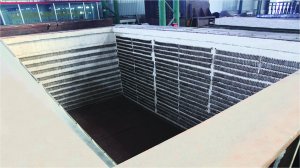The chemical composition of S275J0 steel mainly includes iron (Fe), carbon (C), silicon (Si), manganese (Mn), phosphorus (P), sulfur (S) and other elements. In addition, it may also contain a small amount of copper (Cu), Nickel (Ni), chromium (Cr) and other elements. These alloying elements each play an important role in steel and jointly affect the properties of steel.
Specifically, carbon is the main strengthening element of steel, which can improve the hardness and strength of steel; manganese and silicon can improve the toughness and corrosion resistance of steel; the contents of phosphorus and sulfur need to be controlled within a certain range to ensure the durability of steel. Quality and performance; the addition of alloy elements such as copper, nickel, and chromium can further improve the comprehensive properties of steel, such as corrosion resistance, wear resistance, etc.
The chemical composition content of S275J0 steel usually follows certain standards. For example, the carbon (C) content is generally less than or equal to 0.21%, the manganese (Mn) content is less than or equal to 1.50%, and the phosphorus (P) and sulfur (S) content is controlled as much as possible. lower levels to enhance the purity and performance of the steel. These specific chemical composition levels may vary based on different production standards or application requirements.
Common processing techniques for S275J0 steel mainly include hot rolling, normalizing, tempering and cutting.
Hot rolling: Hot rolling is a commonly used processing technology for S275J0 steel, especially in the delivery state of steel plates. By heating a steel billet and plastically deforming it through a rolling mill, steel plates of the desired shape and size can be obtained. The hot rolling process can refine the grains of steel and improve its mechanical and process properties.
Normalizing: Normalizing is a heat treatment process in which the steel is heated to an appropriate temperature (usually slightly higher than the Ac3 temperature), kept warm for a period of time, and then air-cooled to room temperature. Normalizing can eliminate the internal stress of steel, increase its toughness and strength, and improve its cutting performance. For S275J0 steel, normalizing treatment can further improve its comprehensive mechanical properties.
Tempering: In some cases, S275J0 steel may need to be tempered in order to adjust the hardness and toughness of the steel. Tempering is a process in which quenched steel is heated to an appropriate temperature, kept warm for a period of time, and then cooled. Through tempering treatment, the internal stress caused by quenching can be eliminated and the plasticity and toughness of the steel can be improved.
Cutting: S275J0 steel often requires cutting operations during processing to meet specific size and shape requirements. Common cutting methods include flame cutting, laser cutting, plasma cutting, etc. These cutting methods are efficient and precise and can meet different processing needs.

 Address:Zhengzhou city in China.
Address:Zhengzhou city in China. Phone:0086-371-86151827
Phone:0086-371-86151827 Email:
Email:



 Address: Zhengzhou city in China.
Address: Zhengzhou city in China.


